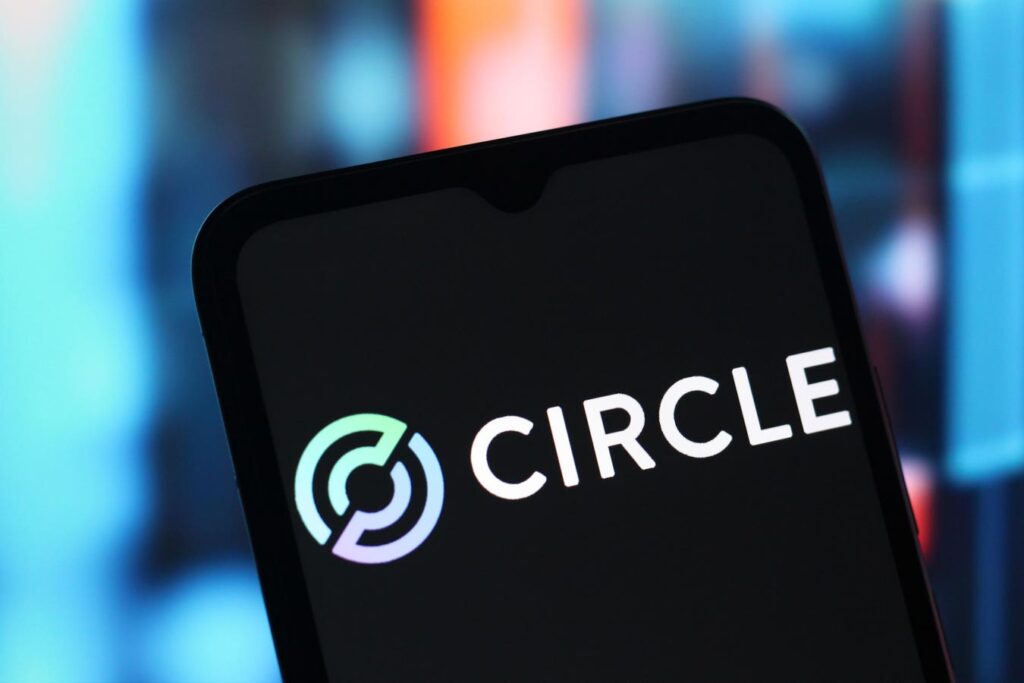Circle Internet Group Inc. (NYSE: CRCL), the issuer of USDC, has rapidly emerged as one of the most strategically significant players in the digital finance sector. In 2024, Circle reported revenues exceeding $1.5 billion — primarily propelled by interest income from reserves that back its stablecoin. However, as the company ventures beyond stablecoin issuance to become a more comprehensive financial infrastructure provider, a crucial question arises: Can Circle realistically increase its revenues to over $4.5 billion within the next few years? Additionally, take a look at the downside case, too. See: Can Circle Stock Drop 80%? Also, check out: What’s Better – Circle Stock Or Bitcoin?
To answer this question, we look at the two engines that could drive such growth: reserve yield and software/API monetization. While these operate under entirely different mechanics, together they establish the basis for a high-growth, high-margin financial platform. That said, if you are seeking potential gains with reduced volatility, the High Quality portfolio has consistently outperformed the S&P 500, yielding over 91% returns since its inception.
Reserve Yield: The Scalable Core
The first and most predictable revenue source is the yield Circle derives from reserves backing USDC. With almost $60 billion in circulating USDC as of 2024, these reserves — primarily held in short-term U.S. Treasuries — produce stable and scalable income. The structure is simple: Circle’s reserves are managed through the Circle Reserve Fund, which mainly invests in Treasury bills and reverse repo agreements. In a 5% interest rate environment, $60 billion in reserves generates around $3 billion in gross interest income annually. After deducting partner revenue sharing (notably with Coinbase) and operational expenses, Circle retains about $1.5 to $1.8 billion as net revenue. Also, see – Coinbase’s Revenue Comparison.
This model increases directly with the growth of USDC supply. If USDC circulation rises to $150 to $200 billion over the next three to five years — a likely scenario considering its growing use in global payments, digital asset settlements, and tokenized real-world assets — the gross revenue from reserves could reach $6 to $8 billion each year. Assuming a conservative net capture rate of 55% to 60%, Circle could potentially earn approximately $4 to $5 billion annually from yield alone. This would already signify nearly a 3x increase from the current baseline, attained solely through scale and favorable interest rate trends.
Infrastructure APIs: The Growth Catalyst
Nonetheless, the more transformative potential lies in Circle’s strategy to establish a software-like infrastructure layer for programmable finance. In addition to stablecoin issuance, Circle has been introducing a variety of API-based services intended to assist businesses in engaging with the blockchain economy: programmable payments, digital identity frameworks, FX and settlement platforms (the fundamental network or system facilitating money transfer between parties, akin to payment rails used in credit card or bank transactions), and on-chain treasury tools. The aim is to position Circle as the financial backbone for Web3 and tokenized finance — a type of “Stripe for digital dollars.”
This segment of the business is still in its infancy, but the monetization potential is vast. If Circle can attract 10,000 mid-sized to large companies to utilize its programmable payment APIs — generating an average revenue of $50,000 to $150,000 per year per client — this alone could yield $500 million to $1 billion in recurring annual revenue. Likewise, by providing smart contract wallet infrastructure and treasury SDKs to fintech platforms and crypto-centric firms, Circle could contribute an additional $700 million to $1.2 billion. On-chain FX, cross-border platforms, and compliance services could bring in another $500 million to $800 million, especially if adopted by high-volume financial institutions or central banks experimenting with tokenized currencies. Even modest adoption across these sectors could elevate Circle’s platform revenue to between $2 billion and $3 billion within five years.
What makes this growth appealing is not only the scale but also the quality of the revenue. While yield income is contingent on interest rates, these API-driven business lines are sticky, recurring, and largely insulated from macroeconomic volatility. This diversification helps lower risk while facilitating long-term margin enhancement. Furthermore, they feature software-like economics — high gross margins, minimal incremental costs, and network effects as adoption expands.
Putting the Math Together
When we combine both aspects of the business — the scalable reserve yield and the developing software revenue — a pathway to $6 to $7.5 billion in annual revenue becomes clear. From today’s $1.5 billion baseline, this would indicate a 3x to 5x increase. Even without significant advances in product adoption or interest rates, a simple increase in USDC supply and steady growth with enterprise clients could achieve those figures.
Several critical factors will influence whether this vision comes to fruition. USDC circulation must expand considerably, ideally supported by regulatory clarity in key markets such as the U.S. and EU. Circle also needs to effectively establish its APIs as critical infrastructure for institutions and fintechs integrating blockchain into their core functions. As central banks and asset managers increasingly transfer capital on-chain, demand for robust, compliant settlement and treasury tools is expected to rise — and Circle stands as one of the few companies already providing a comprehensive solution.
Conclusion: Not Just a Stablecoin Company
In summary, tripling revenue is not an unrealistic scenario for Circle — it is a logical progression of the company’s current path. With USDC yield providing scale and predictability, and APIs offering growth and diversification, Circle possesses the foundational elements of a platform business with genuine fintech leverage. If executed correctly, its revenue will reflect more than just crypto momentum — it will signify the development of a new layer of financial infrastructure.
Investing in a single stock like CRCL carries risks. Conversely, the Trefis High Quality (HQ) Portfolio, which consists of 30 stocks, has consistently outperformed the S&P 500 over the last four years. What’s the reason for this? Overall, HQ Portfolio stocks have delivered higher returns with lower risk compared to the benchmark index, resulting in a less volatile investment experience, as demonstrated by HQ Portfolio performance metrics.
Read the full article here
















